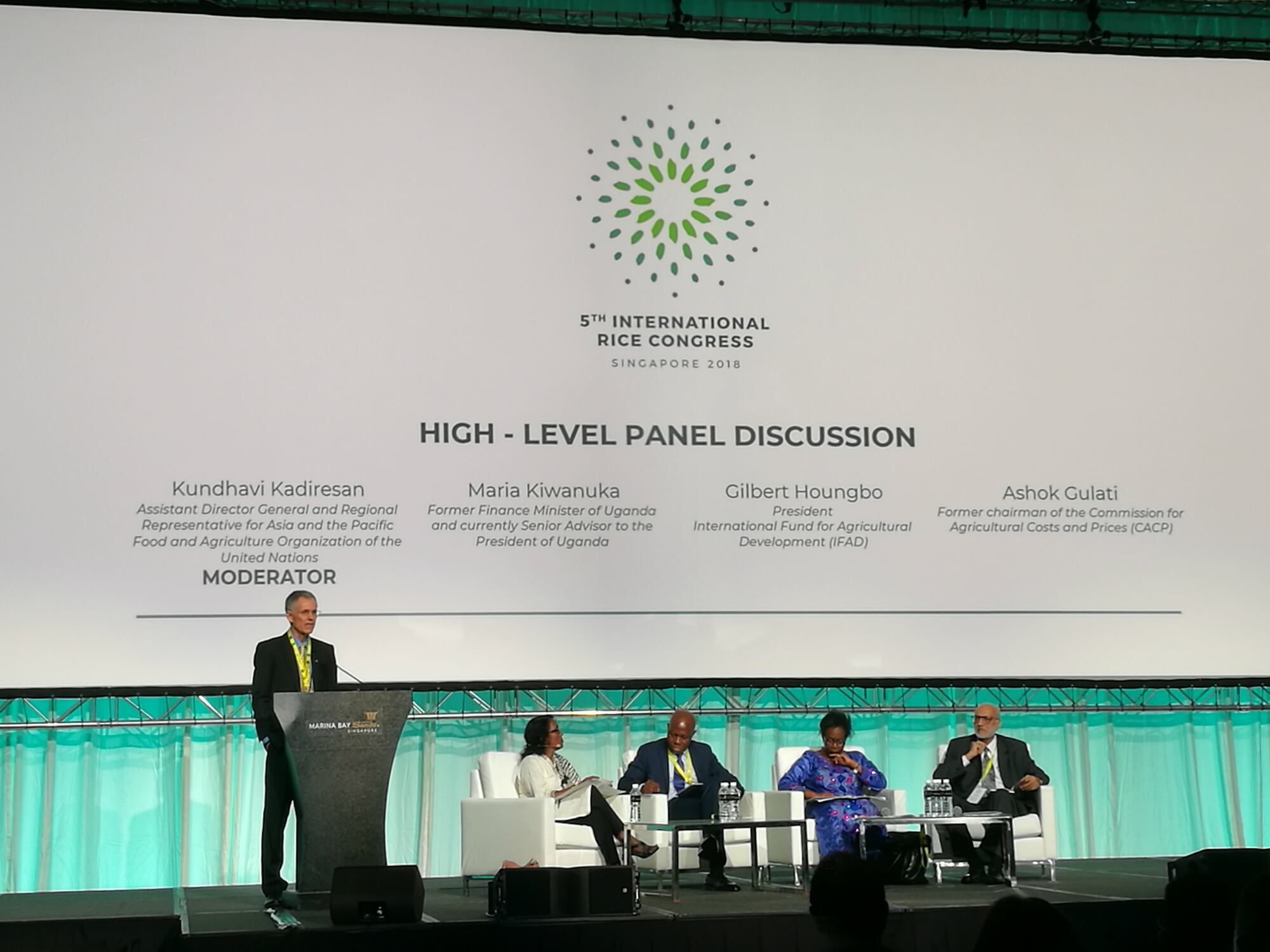Organised by the International Rice Research Institute (IRRI) iat Marina Bay Sands, Singapore, the panel discussion ‘The Future of Rice: Production, Consumption and Trade’ was moderated by Kundhavi Kadiresan, United Nations Food and Agriculture Organisation (FAO) Assistant Director-General, and FAO Regional Representative for Asia and the Pacific.
Also on the panel were Maria Kiwanuka, Senior Advisor to the President of Uganda; Gilbert Houngbo, President of the United Nations’ International Fund for Agricultural Development (IFAD) and former Prime Minister of Togo; and Ashok Gulati, former Chairman of the Indian Commission for Agricultural Costs and Prices (CACP).
Here we provide three key takeaways that the experts believe can improve the industry’s prospects.
1) Improve farmer resilience
Farmer resilience was at the forefront of the rice production discussion, in view of the challenges faced due to climate change, warmer temperatures and extreme weather events.
Houngbo said that the most important starting point to improve farmer resilience is via policy.
“The starting point is at the policy level. [This is why IFAD] engages in a lot of policy dialogue with our member states, but that also has to be driven by awareness […] so we are focusing a lot of our work at the community level too,” said Houngbo.
“What is really crucial is not to just solve one or two issues, but to make the resilience mainstream via the programmes [for everyone, not just those currently at risk].”
He also described technology and infrastructure to be “critical” in making farmers more resilient.
“[We need to] train smallholders in different farming techniques. It is also necessary to make sure that technology is both available and affordable for them.”
“Technology being available alone is no sufficient – it is key that it is also affordable.”
“Also, institutions must be built not only at a national, but also a regional level [to ensure the most benefit].”
Gulati also highlighted the importance of new technology.
“In India, our biggest challenge is water, how to deal with it and how to get more crops out of every drop,” he said.
“[This is why] India is developing crop varieties that are tolerant to droughts and floods, to deal with rising temperatures, drought frequencies and intensities, as well as floods.”
“It is also important to change behaviours [when it comes to handling water]. Just giving out subsidies means no interest in saving water, but maybe rewarding them for saving water [would work better].”
2) Organisational overhaul
According to Kadiresan, more than 90% of the world’s rice production remains within national borders and is only traded domestically.
Houngbo identified three major constraints to fully efficient rice trading for smallholder farmers and open up trade.
“The first is organisational, it is very difficult to make sure organisations are well-structured or trained. Without organisation and aggregation of produce, it is very hard to compete,” he said.
“The next is financial. This is very critical, farmers must be able to participate at different ladders of the value chain, [something must transform] so that they have access to the resources they need.
“Finally is the technical aspect, to meet both technological and both international and domestic standards.”
“Currently we do not really have any regionalised approach in place, but do have an idea of some common constraints and opportunities.”
3) Greater nutrition, greater consumption?
When it comes to rice consumption, the panel unanimously agreed that nutrition is a crucial factor to focus on.
“It is important to bring much more different parameters together [when it comes to rice consumption and nutrition],” said Houngbo.
“[In IFAD], one of our targets is to make sure that by 2021, 50% of our projects [are made] nutrition-sensitive. Moving forward, progressively, this will be 100%, because this is quite crucial.”
He also highlighted the importance of creating awareness amongst smallholder farmers when it comes to nutrition-sensitivity in rice crops, as 70% of food in Asia and 80% in Africa is produced by these farmers.
Gulati spoke on the implications of dietary diversification for life scientists and policymakers, saying: “As incomes increase, diets are moving away from cereals. More and more are going for [meat and other sources of food] for their diets.”
“[However], in India 60% of calories still comes from cereal, and malnutrition is still a big issue, for example stunting. […] So, to remove malnutrition quickly, one way is to look at [new varieties of crops], for example zinc-rich or protein-rich rice or wheat.”
“Basically, science has to give us answers, and not just more diversification.”


